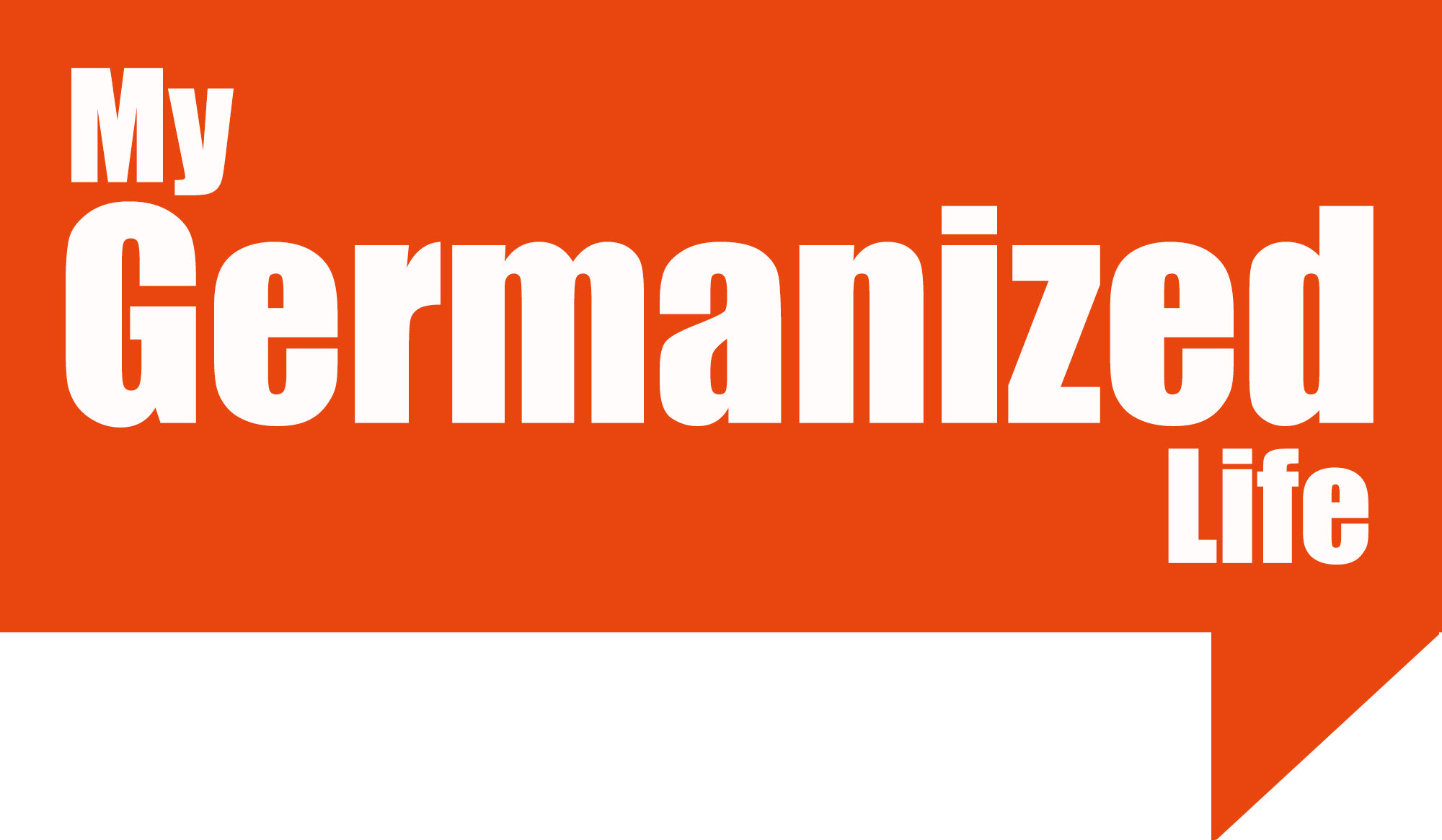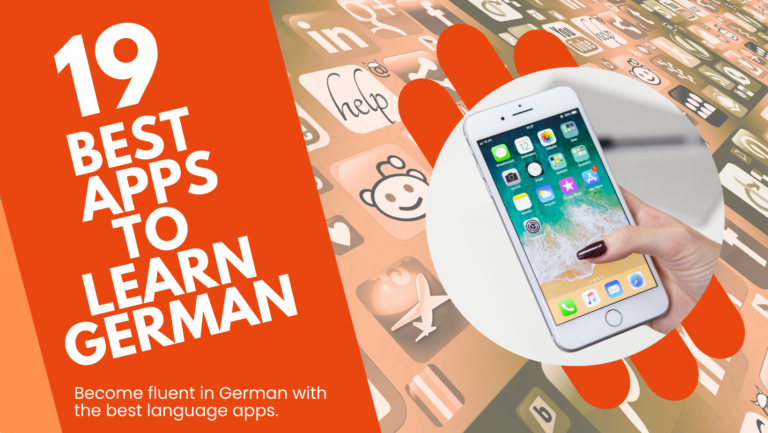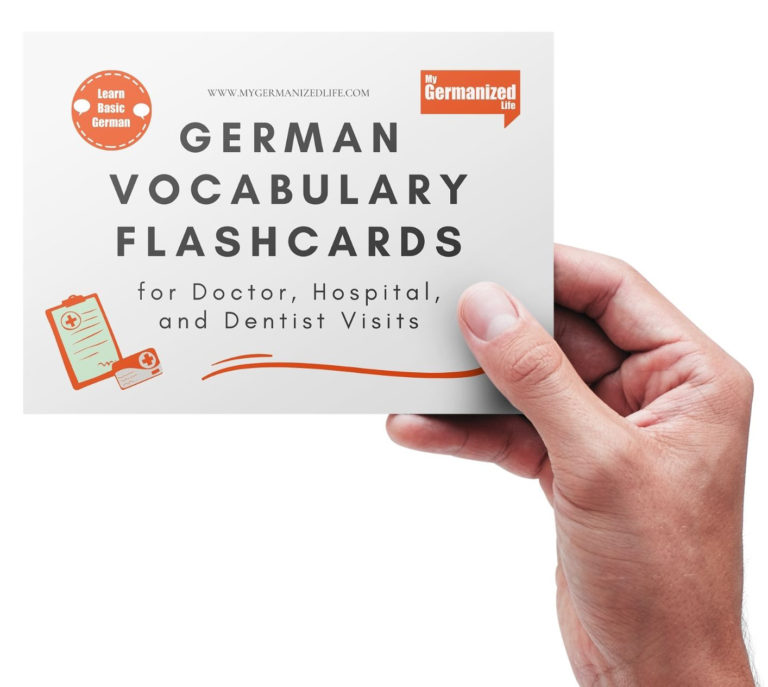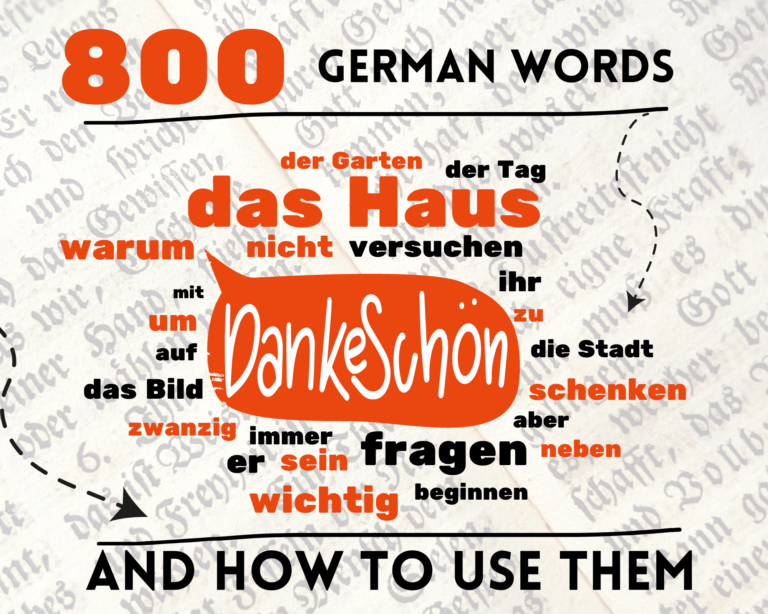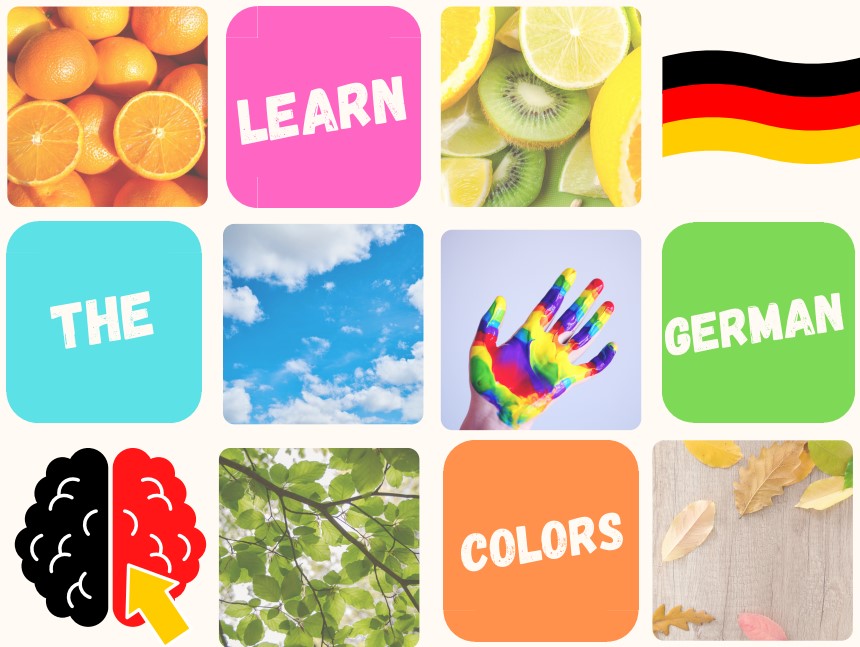
Have you ever wondered how to say the colors in German? Colors are a fun and easy way to start learning the German language and can enrich your conversations as you begin speaking. Another compelling reason to start with German colors is that they will ease you into one of the essential grammar topics: the German Case System.
Did you know that colors influence our first impression by up to 90%? Learning the colors and shapes in German will make your sentences more descriptive, improving your fluency and pronunciation.
Below, you can download German Color Vocabulary Flashcards for free.
Let’s look at all the primary colors, more advanced shades of the rainbow, and ways to describe colors. Then, you’ll learn about the different shapes. In the end, you’ll learn how to form German sentences using the new vocabulary.
Table of Contents
- The Basic Colors in German
- More Advanced German Colors
- German Hair Colors
- German Words to Describe Colors
- Shapes in German
- German Example Sentences With Colors and Shapes
- Final Thoughts
The Basic Colors in German
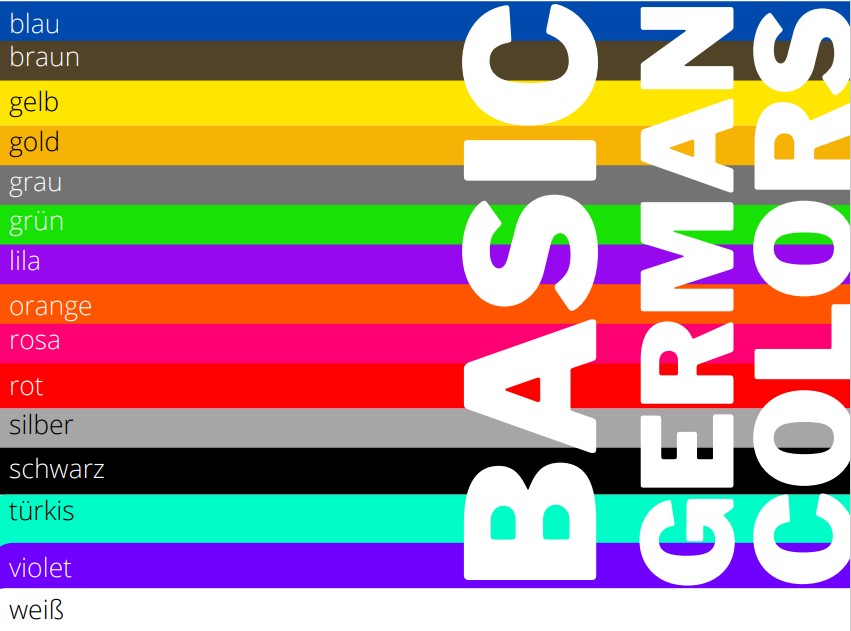
All the colors you need to speak fundamental German are listed below in alphabetical order.
- blau – blue
- braun – brown
- gelb – yellow
- gold – gold
- grau – gray
- grün – green
- lila – purple
- orange – orange
- rosa – pink
- rot – red
- silber – silver
- schwarz – black
- türkis – turquoise
- violet – violett
- weiß – white
blau – blue
braun – brown
gelb – yellow
gold – gold
grau – gray
grün – green
lila – purple
orange – orange
rosa – pink
rot – red
silber – silver
schwarz – black
türkis – turquoise
violet – violett
weiß – white
In German, you typically use colors as adjectives to describe nouns. That means the color’s ending needs to agree with the noun’s gender, case, and number. When you’re ready to tackle the next step, learn about the German Cases and Noun Gender in the grammar section.
More Advanced German Colors
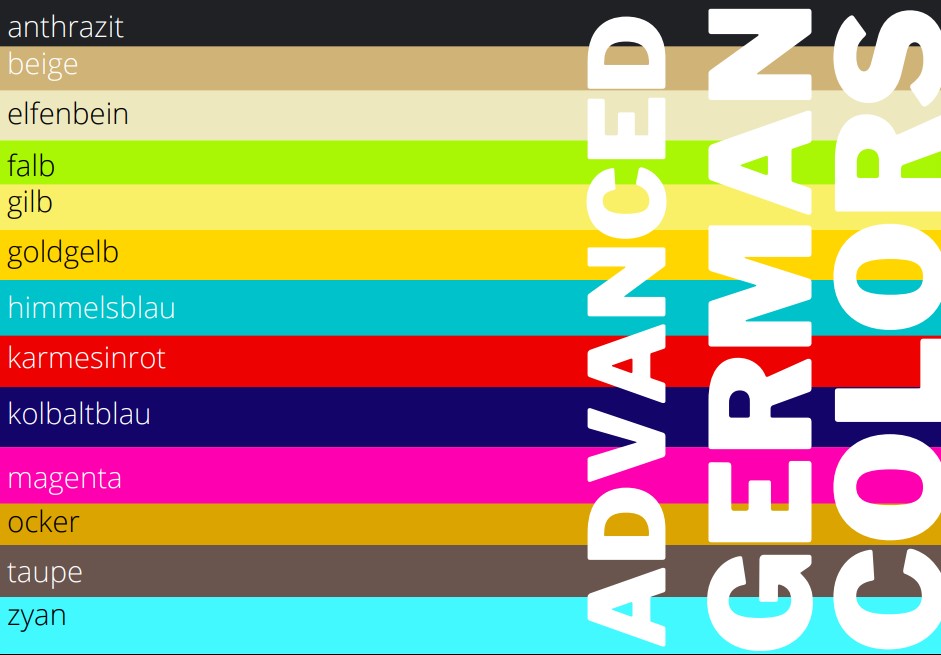
Now that you know the basic colors in German, you may be curious to find some names of less common colors.
- anthrazit – anthrazite
- beige – beige
- elfenbein – ivory
- falb – light yellow green
- gilb – light yellow
- goldgelb – golden yellow
- himmelsblau – sky blue
- karmesinrot – crimson
- kolbaltblau – cobalt blue
- magenta – magenta
- ocker – ocher
- taupe – gray-brown
- zyan – cyan
anthrazit – anthrazite
beige – beige
elfenbein – ivory
falb – light yellow green
gilb – light yellow
goldgelb – golden yellow
himmelsblau – sky blue
karmesinrot – crimson
kolbaltblau – cobalt blue
magenta – magenta
ocker – ocher
taupe – gray-brown
zyan – cyan
These colors can brighten up any description and come in useful when you’re shopping for fabric or clothing.
German Hair Colors
In German, hair colors (Töne) have unique names. You’ll find many hair dyes with English-sounding names, but some standard colors could come in handy.
- aschblond – ash blond
- blond – blond
- dunkelblond – dark blond
- hellblond – light blond
- mittelblond – medium blond
- naturblond – natural blond
- platinblond – platinum blond
- rotblond – strawberry blond
- kupferrot – copper red
- burgunderrot – burgundy red
- dunkelrot – dark red
- braun – brown
- goldbraun – golden brown
- honigbraun – honey brown
- kastanienbraun – chestnut brown
- schokobraun – chocolate brown
- dunkelbraun – dark brown
- schwarzbraun – black brown
- blauschwarz – blue black
- aubergine – dark purple
aschblond – ash blond
blond – blond
dunkelblond – dark blond
hellblond – light blond
mittelblond – medium blond
naturblond – natural blond
platinblond – platinum blond
rotblond – strawberry blond
kupferrot – copper red
burgunderrot – burgundy red
dunkelrot – dark red
braun – brown
goldbraun – golden brown
honigbraun – honey brown
kastanienbraun – chestnut brown
schokobraun – chocolate brown
dunkelbraun – dark brown
schwarzbraun – black brown
blauschwarz – blue black
aubergine – dark purple
According to a recent study, around 68% of Germans have blond hair. Only 0.2% of the German population has natural red hair.
German Words to Describe Colors
Some colors are bright, others are dull, and there is more than one way to describe them in German.
- ausgewaschen – washed out
- brilliant – bright
- bunt – colorful
- dunkel – dark
- fahl – pale
- farbenfroh – colorful
- glänzend – shiny
- glanzlos – lackluster
- hell – light
- matt – matte
- pastell – pastel
ausgewaschen – washed out
brilliant – bright
bunt – colorful
dunkel – dark
fahl – pale
farbenfroh – colorful
glänzend – shiny
glanzlos – lackluster
hell – light
matt – matte
pastell – pastel
These adjectives can help you describe colors in specific detail and add valuable information to a sentence.
Shapes in German
First, let’s explore the most fundamental shapes in German.
- circle – der Kreis
- oval – das Oval
- rectangle – das Rechteck
- square – das Quadrat
- triangle – das Dreieck
circle – der Kreis
oval – das Oval
rectangle – das Rechteck
square – das Quadrat
triangle – das Dreieck
The following shapes are common but may require more practice to remember, especially the genders.
- dot, point – der Punkt
- cone – der Kegel
- cube – der Würfel
- cylinder – der Zylinder
- heart – das Herz
- hemisphere – die Halbkugel
- pyramid – die Pyramide
- semicircle – der Halbkreis
- shape – die Form
- sphere – die Kugel
- spiral – die Spirale
- star – der Stern
- zigzag – das Zickzack
dot, point – der Punkt
cone – der Kegel
cube – der Würfel
cylinder – der Zylinder
heart – das Herz
hemisphere – die Halbkugel
pyramid – die Pyramide
semicircle – der Halbkreis
shape – die Form
sphere – die Kugel
spiral – die Spirale
star – der Stern
zigzag – das Zickzack
For most shapes with corners, count the number of corners, use the neuter article, das, and add –eck to the end.
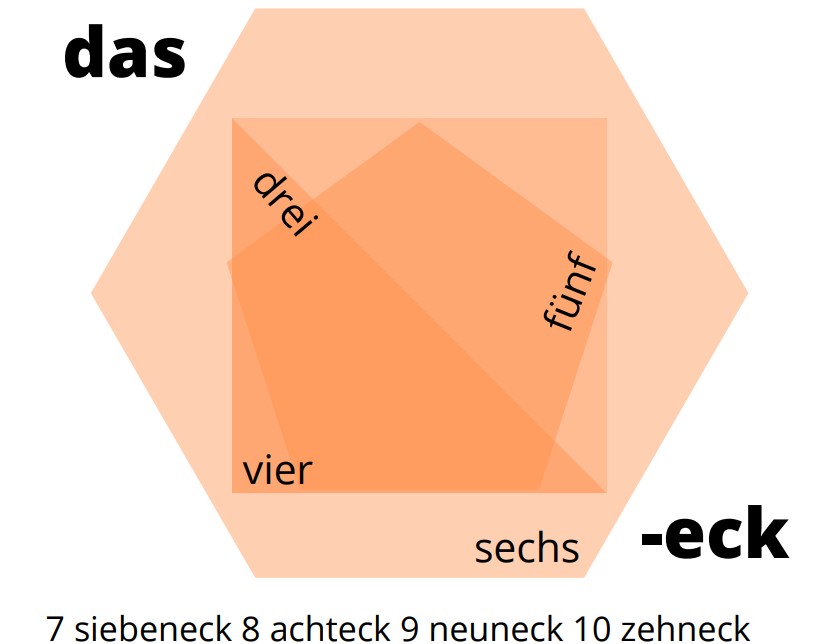
- das Dreieck – Triangle
- Viereck – Square
- Fünfeck – Pentagon
- Sechseck – Hexagon
- Siebeneck – Heptagon
- Achteck – Octagon
- Neuneck – Nonagon
- Zehneck – decagon
das Dreieck – Triangle
Viereck – Square
Fünfeck – Pentagon
Sechseck – Hexagon
Siebeneck – Heptagon
Achteck – Octagon
Neuneck – Nonagon
Zehneck – Decagon
This pattern makes the shapes above easier to remember than many of the others.
German Example Sentences With Colors and Shapes
Below are examples of German sentences with colors.
Example 1: Die schwarze Hose ist edel. (The black pants are elegant.)
Here, the word ‘schwarz’ gets an ‘e’ ending because ‘the pants’ is a feminine noun in the nominative case with a definite article (the).
Example 2: Ein dunkelorangefarbener Koffer fehlt. (A dark orange colored suitcase is missing.)
An ‘er’ ending applies to the color adjective before the masculine noun in the nominative case with an indefinite article. But, if the sentence started with a definite article, the ending would change to ‘e.’
Example 3: Der dunkelorange Koffer fehlt. (The dark orange suitcase is missing.)
It only takes one changing element in a sentence to change an article ending also, which is why it’s essential to consider all three aspects of German sentence building: Number, Gender, and Case. Remember, the adjective endings are different for definite articles (the) than indefinite articles (a or an).
Example 4: Unsere blauen Kleider sind schmutzig. (Our blue dresses are dirty.)
Here, an ‘en’ ending is suitable because the noun is plural and nominative.
Example 5: Er hat die silberne Uhr geschenkt bekommen. (He received the silver watch as a gift.)
An ‘e’ ending applies to the color adjective preceding a feminine noun in the accusative case.
Final Thoughts
Learning German vocabulary or words in any foreign language requires a routine commitment. Because it takes time and repetition to remember most foreign words, short bursts of practice regularly will be more beneficial to your learning process than trying to learn everything at once.
Can you think of any colors or shapes I missed that you’d like to know in German? Submit your feedback and suggestions for vocabulary below.
